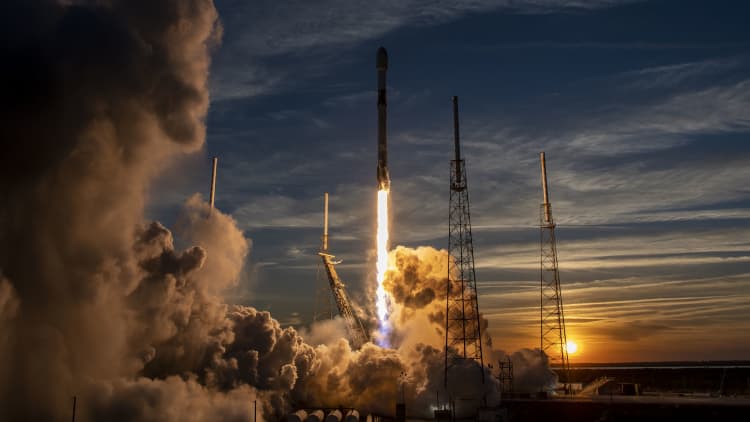PARIS — SpaceX nearly doubled its backlog of Starlink in-flight Wi-Fi orders with last week’s United Airlines deal, a company director said Tuesday.
“Very excited that we have about 2,500 aircraft under contract now, bringing what was effectively a startup to now what we think is a growing experience that’s going to resonate with all the passengers and the airlines worldwide,” Nick Galano, SpaceX director of Starlink aviation sales and partnerships, said during a panel at the World Space Business Week conference in Paris.
The satellite internet arm of Elon Musk’s space company is pushing into the in-flight connectivity, or IFC, market. Last week, United said it will outfit its more than 1,000 planes with Starlink and won’t charge customers for the Wi-Fi.
The United megadeal was Starlink’s largest IFC agreement yet. It will also push out United’s existing quartet of WiFi providers — Viasat, Panasonic, Thales, and Gogo — as Starlink is installed on the airline’s planes in the next several years.
SpaceX has previously announced in-flight deals and has started service with Hawaiian Airlines, Qatar Airways, Japan’s Zipair, Latvia’s airBaltic and semi-private charter airline JSX.
SpaceX has steadily expanded its Starlink network and product offerings since its debut in 2020. The company initially targeted consumers, but has expanded into other markets, including enterprise services such as aviation and maritime.
There are currently about 6,400 Starlink satellites in orbit that connect more than 3 million customers in 100 countries, according to the company.
Galano touted “the sheer factor of the capacity that we can provide” via Starlink, saying the current satellite constellation is “probably over 100 times what all the legacy systems have provided” due to “over 300 terabits per second worth of capacity today.”
SpaceX continues to increase that capacity as well, launching rockets carrying new Starlink satellites about every three days on average this year, according to the company.
Galano also emphasized that SpaceX is trying to reduce the time it takes to install new antennas on aircraft. Known as retrofitting, the process is a pain point for airlines that requires taking aircraft out of active service for days at time in order to upgrade or replace a satellite communications system.
“We’re trying to simplify those installations — innovation is a word we use — to get them done in under a day, which we’ve proven on Hawaiian’s and JSX’s fleets,” Galano said.
By comparison, Delta Air Lines said its satellite IFC retrofits take “on average about three days,” according to Glenn Latta, the airline’s managing director of in-flight entertainment and connectivity. But Latta said Delta’s process, which requires retrofitting 1,200 aircraft, is also more intensive compared with Starlink’s installation on Hawaiian’s fleet, which stood at 66 aircraft in mid-2024, according to a securities filing.
“A retrofit for us is removing the system that’s there … and then you can do your install,” Latta told CNBC after the conference panel. “[Hawaiian] have never had a satcom system, so that’s one of the differences to take into account.”
Delta, which relies on Viasat for in-flight service, said it would make its WiFi free to members in early 2023 — a decision that Latta says has proven to be well worth it to the airline. Both Delta and United are in a battle for high-end customers.
“We’ve gotten 3 million additional SkyMiles members as part of our loyalty program by offering free internet access,” Latta said.

— CNBC’s Leslie Josephs contributed to this article.







